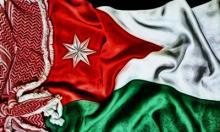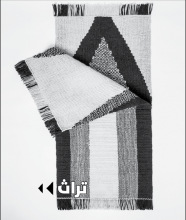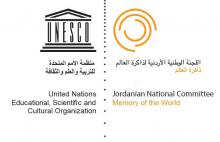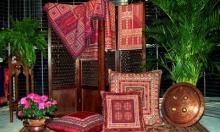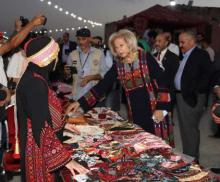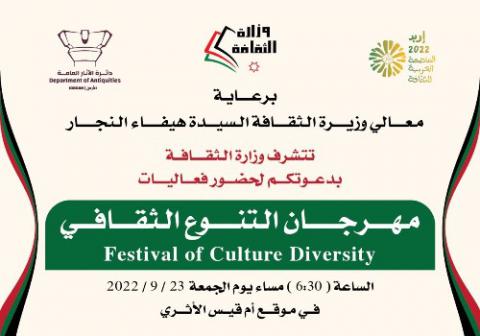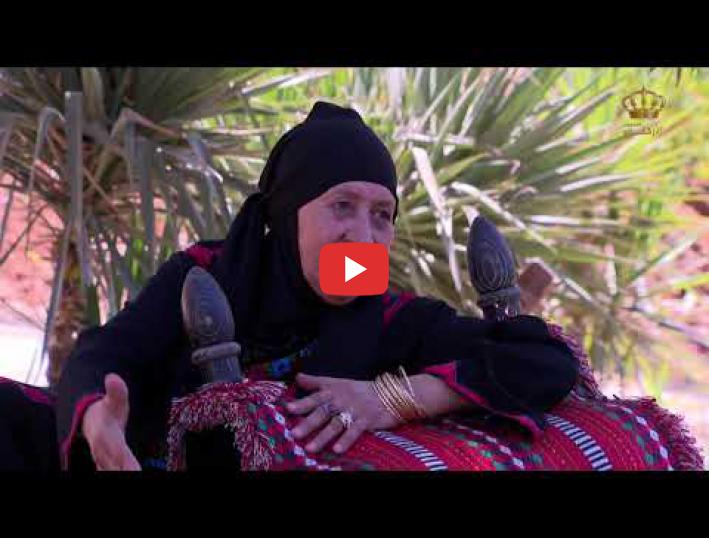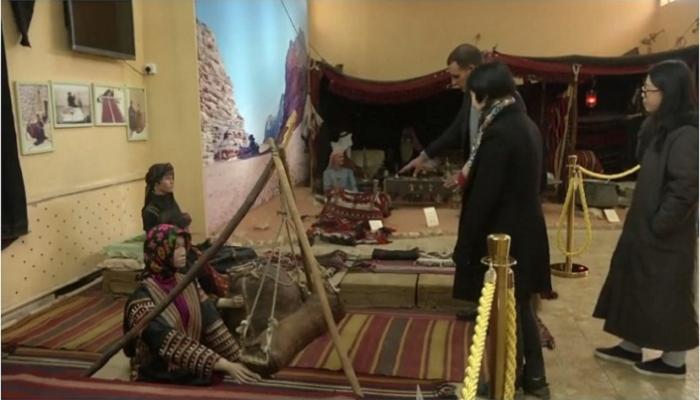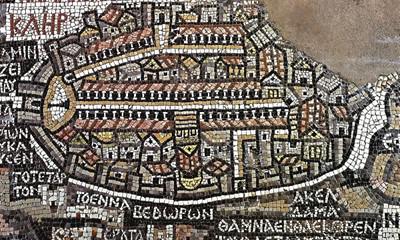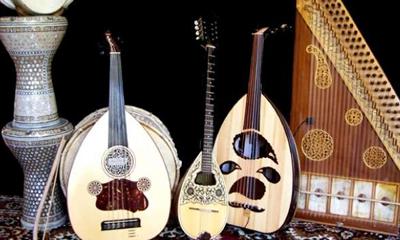- الرئيسية
- مديرية التراث
- نبذه عن المديرية
المزيدأولاً: نشأة المديرية تم تأسيس مديرية التراث في نهاية عام 2010 وذلك حرصاً من وزارة الثقافة على رعاية وصون التراث الثقافي غير المادي في المملكة الاردنية الهاشمية. «التراث الثقافي غير المادي » الممارسات والتصورات وأشكال التعبير والمعارف والمهارات - وما يرتبط بها من آلات وقطع ومصنوعات وأماكن ثقافية...
- أهداف مديرية التراث
- اقسام المديرية
المزيدأقسام مديرية التراث: 1- قسم البرامج التراثية : من أبرز مهامه تنظيم وتنفيذ ومتابعة المشاريع والبرامج والأنشطة المتعلقة بالتراث الثقافي غير المادي ضمن خطة المديرية والجهات ذات العلاقة، ومتابعة الاتفاقيات التي تعقدها المملكة مع المنظمات والهيئات الدولية لغايات تنفيذ المشاريع التي تقع ضمن نطاقها. 2...
- الاصدارات المزيد
- التعليمات والاتفاقيات المزيد
- نبذه عن المديرية
المزيد
- المشاريع
- مشروع المكنز الوطني
المزيداختصاصات لجنة ذاكرة العالم الأردنية الاسم: Jordanian Memory of the World committee اللجنة الأردنية لذاكرة العالم الهيكل: تتألف لجنة ذاكرة العالم الأردنية من لجنة رفيعة المستوى و 4 لجان فرعية متخصصة في مختلف جوانب اللجنة. الوظيفة: ستضطلع لجنة ذاكرة العالم في الأردن بمسؤولية...
- المشروع الوطني لحصر التراث
المزيدنبذة عن المشروع يهدف هذا المشروع إلى حصر التراث الثقافي غير المادي في كافة محافظات المملكة الأردنية الهاشمية، وبالتزامن. كما يهدف إلى إشراك المجتمع المحلي في الجرد، وإنشاء قاعدة بيانات شاملة، وتحديد عناصر التراث الثقافي غير المادي المهدّدة بالانقراض، ورفع الوعي بأهمية التراث الثقافي غير المادي حتى...
- مشروع تفريغ و أرشفة أشرطة الكاسيت المسجلة في أواسط السبعينيات
المزيدمشروع إعادة تأهيل المادة الصوتية المسجّلة في السبعينيات من القرن الماضي. (الذاكرة المسجّلة في أشرطة الكاسيت التقليدية) للحفاظ على الموروث الأردني الثقافي، والكنز الذي قامت بتسجيله نخبة من الباحثين في التراث في أواسط السبعينيات، وفي مناطق مختلفة من المملكة، ارتأت مديرية التراث أن يصار إلى البحث عن...
- برنامج ذاكرة العالم
المزيداختصاصات لجنة ذاكرة العالم الأردنية الاسم: Jordanian Memory of the World committee اللجنة الأردنية لذاكرة العالم الهيكل: تتألف لجنة ذاكرة العالم الأردنية من لجنة رفيعة المستوى و 4 لجان فرعية متخصصة في مختلف جوانب اللجنة. الوظيفة: ستضطلع لجنة ذاكرة العالم في الأردن بمسؤولية...
- مشاريع مدن الثقافة
المزيد
المشاريع
تم تخصيص جزء من مخصصات مدن الثقافة والالوية في الاعوام السابقة لدعم مشاريع تراثية تُعنى في الحفاظ على الموروث الشعبي الاردني وتسويق المنتج التراثي ودعم الافراد والجمعيات والفرق التراثية. حيث قامت مديرية التراث بالتنسيب بدعم المشاريع التي تحقق روية ورسالة المديرية وتسلط الضوء على المنتج التراثي... - مهرجان التنوع الثقافي
المزيد
المشاريع
يأتي ضمن احتفالات العالم باليوم العالمي للتنوع الثقافي الذي يصادف 16/5 من كل عام، ويهدف هذا المهرجان إلى الحفاظ على النسيج الاجتماعي الاردني وتعزيز الترابط بين كافة أفراد المجتمع الأردني وإبراز نسيج الحضارة الأردنية وجماليات التنوع الثقافي في الأردن والتعريف بالهوية الثقافية المتميزة لدى الأردن... - ترشيح العناصر على قوائم التراث الثقافي غير المادي
المزيد
المشاريع
بعد ان يتم حصر عناصر التراث الثقافي غير المادي في المملكة وادراجها على قوائم الحصر لدى مديرية التراث، تقوم المديرية وبالتنسيق مع مؤسسات المجتمع المدني بترشيح عناصر مختارة على قوائم اليونسكو للتراث غير المادي. إن ترشيح عنصر واحد على قوائم التراث سواء كان ملف وطني أو مشترك يستغرق عامين ويتطلب تحضير... - العناصر الاردنية المدرجة على قوائم اليونسكو
المزيد
المشاريع
تم ترشيح ملف (العادات والتقاليد والممارسات المتعلقة برقصة السامر) في الاردن على القائمة التمثيلية للتراث الثقافي غير المادي للإنسانية، وستعلن نتائج الترشيح خلال شهر تشرين الثاني من العام 2018. ترشيح ملف النخلة والعادات والطقوس المرتبطة بها: تراثاً عربياً مشتركاً على القائمة التمثيلية للتراث...
- مشروع المكنز الوطني
المزيد
- المركز الإعلامي
- قواعد البيانات
- قاعدة بيانات المكنز الوطني
المزيد
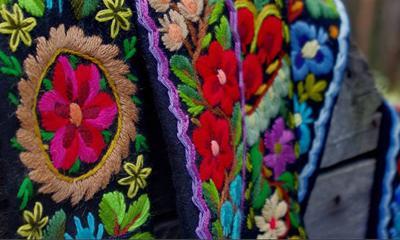
- قوائم الحصر الوطني
المزيد
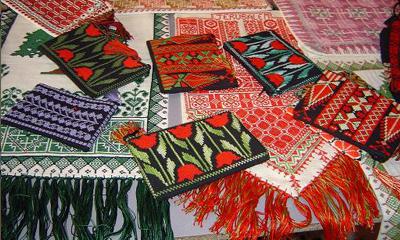
- قاعدة بيانات الحرفيين
المزيد
قاعدة بيانات الحرفيين
- قاعدة بيانات المكنز الوطني
المزيد

المنسف AlMansaf
التصنيف:
- التقاليد وأشكال التعبير الشفهي بما في ذلك اللغة
- التقاليد
- تقاليد الطعام
- الاكلات الشعبية
الشرح:
|
المنسف: وليمة احتفاءيه ودلالاتها الاجتماعية والثقافية
يجب أن يكون الطبق المدور جاهزًا لترتيب طبقات الخبز والأرز واللحوم. يتم رش اللوز المجفف المقلي ، وأحيانًا البقدونس المفروم على السطح. في الشمال ، توضع حول اللحم كرات البرغل المقلية المحشوة باللحم المفروم. يبدأ أقارب المضيف في حمل الأطباق إلى قاعة الاستقبال. دائرة المدعوين حولهم ، كل منهم 5-7 أشخاص ، يأكلون باليد اليمنى ، بينما يتم وضع الشخص الأيسر خلف الظهر. يستخدم بعض الضيوف الأطباق
|
Mansaf: A Festive Banquet and its Social and Cultural Meanings AL Mansaf: A Festive Banquet and its Social and Cultural Meanings is the most popular traditional dish. It is a highly regarded cultural manifestation and symbol, which comprises strong and deep connotations of identity, social cohesion, solidarity, expressions of security, sense of identity and morality; not to mention other manifold social values contained in it. Al Mansaf is served at all major events, celebrations؛ weddings and baby-birth،for honoring guests and celebrating major religious holidays and many other occasions. A large section of people using al-Mansaf for diverse cultural and social purposes and sharing knowledge related to it in their midst. It is practiced by groups, communities, and individuals particularly women, who are chiefly involved in all stages of preparation from gathering ingredients to carrying out recipes, which they ensure its transmission within their respective families. The community of chiefs and cooks in production kitchens, restaurants, hotels, and cuisine societies, which contribute to spreading and transmitting the traditions of al-Mansaf. Many of these societies find support from local municipalities, which elect these societies to promote the element. Jordanians abroad, who represent society and share in its values, customs, and traditions within their families, contribute to its spread and preservation. Mostly, all Jordan celebrates al-Mansaf. In southern, northern, and middle badia, it is the only meal served to guests. Then, the rural areas in southern regions (al-Karak, At-Tafilah, Ma'an) except Aqaba, where Mansaf competes with a traditional seafood meal, al-Sayadyah. In the cities, al-Mansaf is for special occasions, and so it is the north (Irbid, ar-Ramtha, Ajloun, al-Mafraq) and Balqa. The element exists in regions around Jordanian boarders, where traditions merge because of connections between tribes, i.e. Tabuk southeast of KSA; an area is near the southern Jordanian boarders. Jordan share the element with Hauran to the north, Hebron, Negev Bedouins in southern Palestine, and the nomads living near the eastern boarders in Iraq and KSA. The dish consists of meat cooked in a sauce diluted from fermented dried lumps of yogurt (Jameed) made from goats or sheep’s milk. Chunky pieces of mutton meat are boiled. The cook adds the Jameed sauce into the pot to cook them together. This cooked mixture is mainly served with rice, and sometimes bulgur, overlying a layer of special thin bread called (Shraak). A platter, mostly rounded, should be ready for arranging the layers of the bread, rice, meat. Fried desiccated almonds, and sometimes chopped parsley are sprinkled on the surface. In the North, fried bulgur balls filled with minced meat are placed around the meat. |


